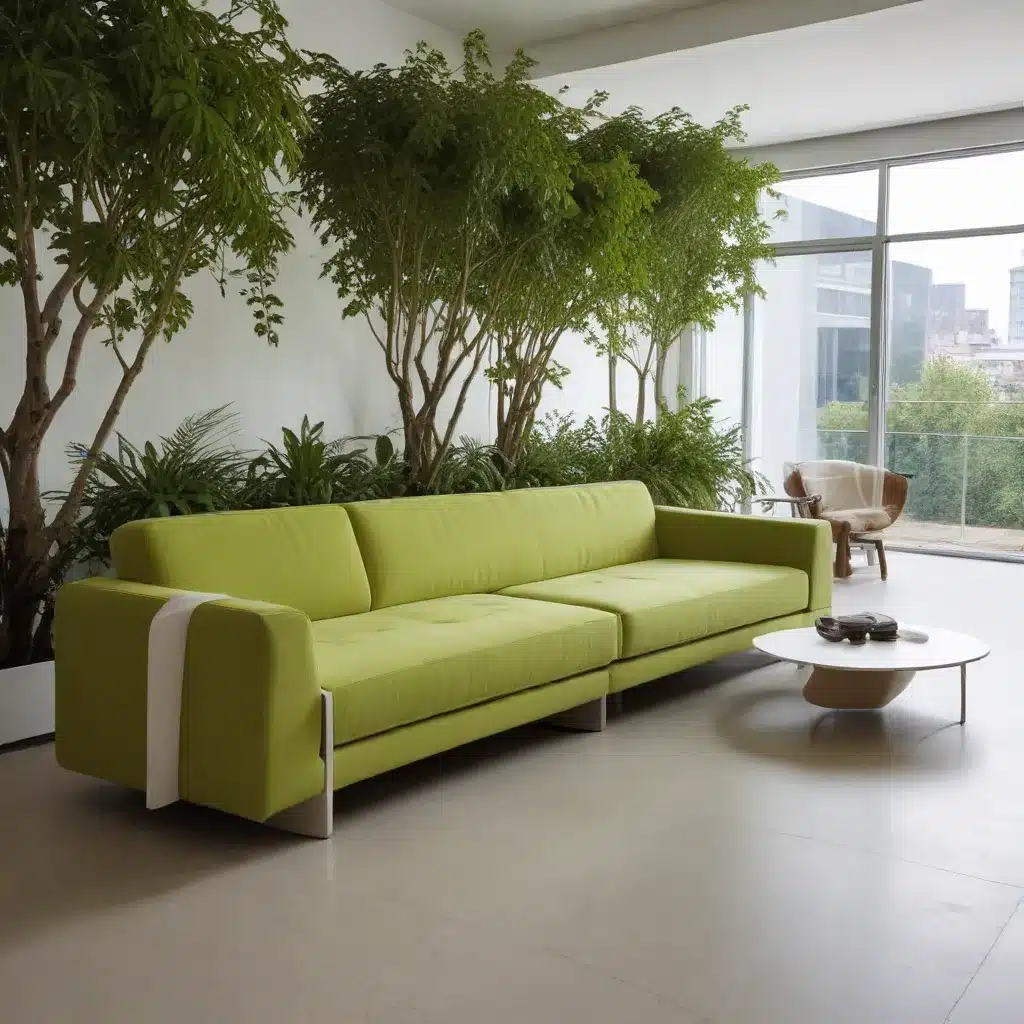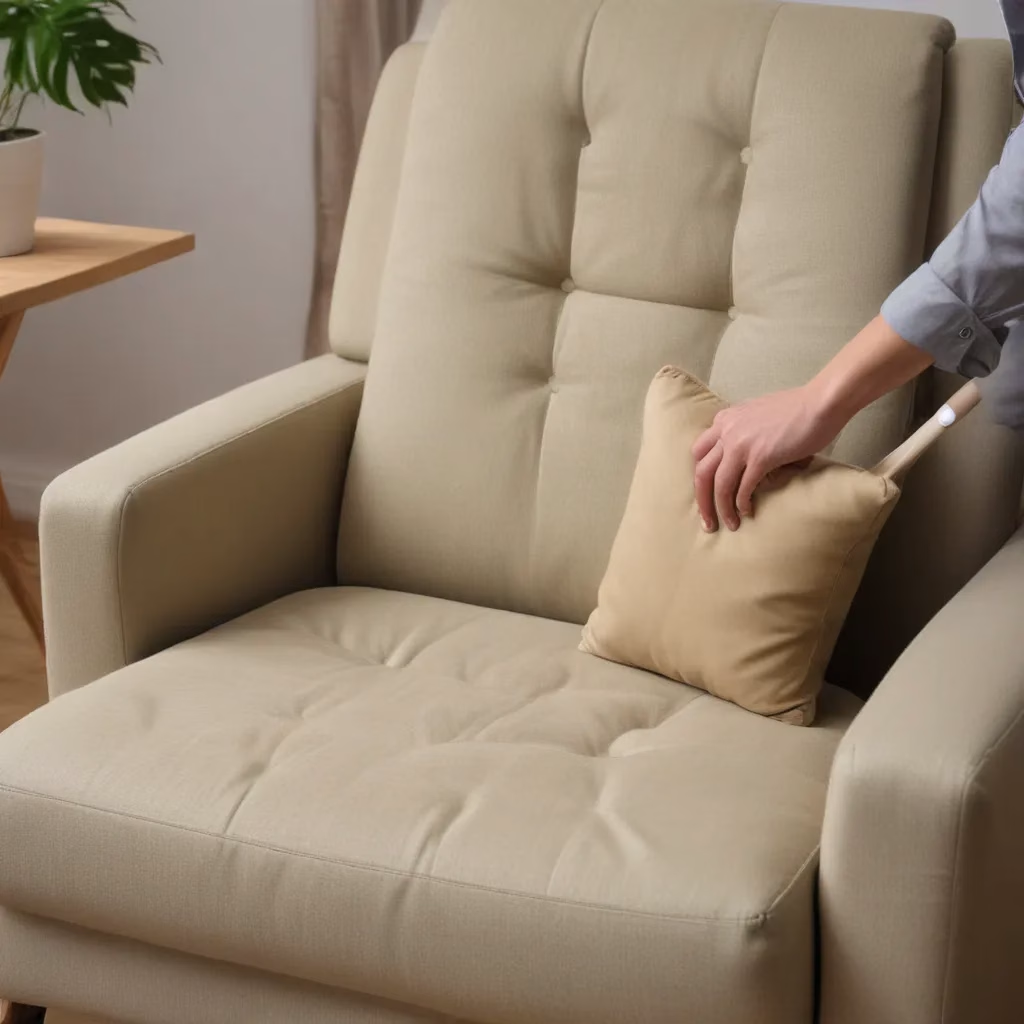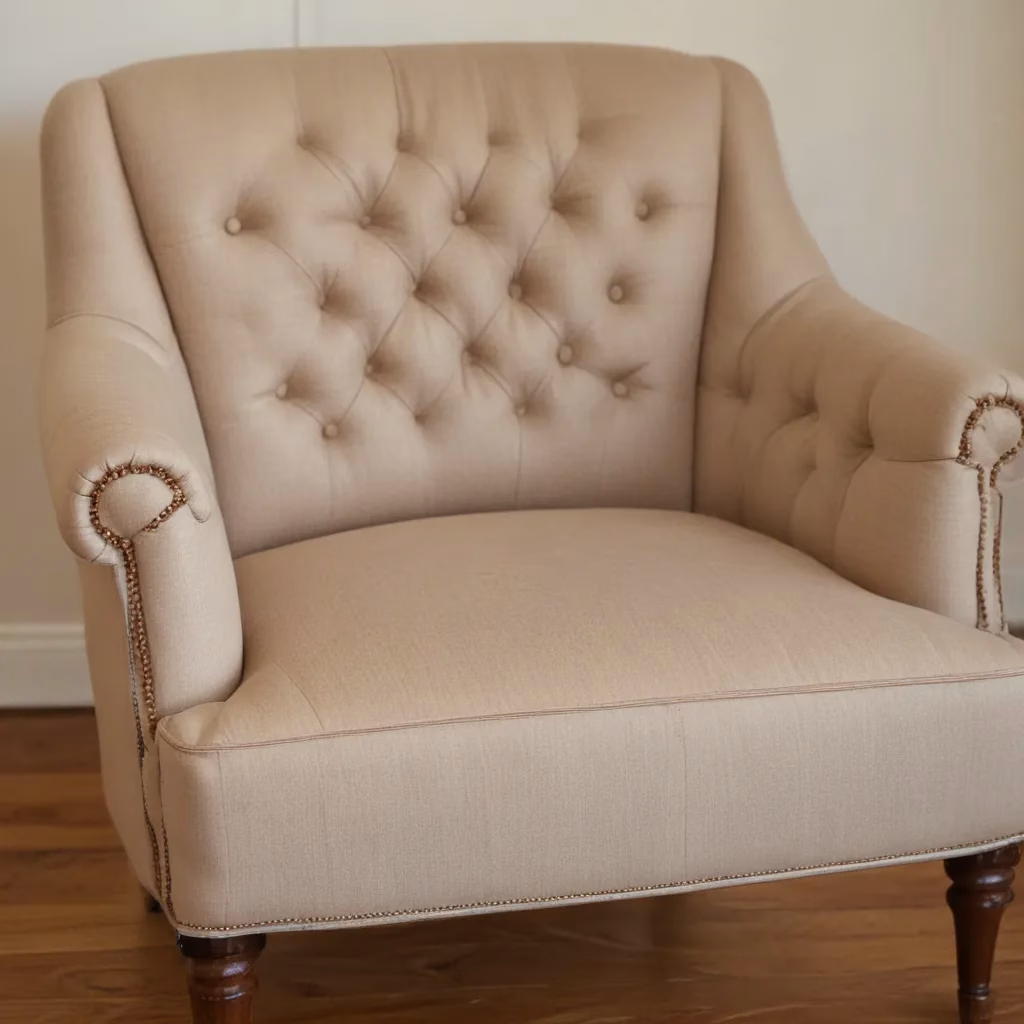
The Evolution of Eco-Friendly Furniture
As a furniture specialist with years of experience in the industry, I’ve witnessed firsthand the remarkable transformation in how we approach sofa design and production. The shift towards sustainability isn’t just a passing trend; it’s a fundamental change in our industry’s ethos.
Eco-friendly furniture has come a long way from its humble beginnings. In the early days, “green” sofas were often associated with compromise – either in style, comfort, or durability. But those days are long gone. Today’s environmentally conscious sofas are a testament to innovation and craftsmanship.
I remember when I first encountered a truly sustainable sofa. It was at a trade show about a decade ago. The piece looked unremarkable at first glance, but upon closer inspection, I was amazed to learn about its composition. From recycled steel springs to organic cotton upholstery and FSC-certified wood frame, every component was chosen with the environment in mind. That moment marked a turning point in my career, igniting a passion for eco-friendly furniture that has only grown stronger over the years.
Sustainable Materials: The Foundation of Green Sofas
The heart of any eco-friendly sofa lies in its materials. Over the years, I’ve seen an explosion of innovative, sustainable options that have revolutionized our industry. Let’s break down some of the most exciting developments:
-
Recycled Fabrics: One of the most significant advancements I’ve seen is the use of recycled materials in upholstery. Fabrics made from recycled plastic bottles are not only durable but also incredibly soft. It’s amazing to think that your comfortable sofa could be helping to reduce plastic waste!
-
Organic Textiles: Natural fibers like organic cotton, hemp, and linen have become increasingly popular. These materials are grown without harmful pesticides and offer a beautiful, breathable alternative to synthetic fabrics.
-
Sustainable Wood: Forest Stewardship Council (FSC) certified wood ensures that the timber used in sofa frames comes from responsibly managed forests. I’ve visited some of these forests, and the difference in biodiversity compared to conventionally logged areas is striking.
-
Natural Latex: As an alternative to petroleum-based foams, natural latex offers excellent comfort and durability. Derived from rubber trees, it’s a renewable resource that biodegrades at the end of its life cycle.
-
Recycled Metals: Springs and other metal components can now be made from recycled steel, reducing the demand for new metal production.
Here’s a quick comparison of traditional vs. eco-friendly sofa materials:
| Component | Traditional Material | Eco-Friendly Alternative |
|---|---|---|
| Frame | New hardwood | FSC-certified or reclaimed wood |
| Cushioning | Polyurethane foam | Natural latex or recycled foam |
| Springs | New steel | Recycled steel |
| Fabric | Synthetic fibers | Organic cotton or recycled polyester |
| Dyes | Chemical-based | Low-impact or natural dyes |
The Green Manufacturing Process
It’s not just about the materials; how sofas are made is equally important for sustainability. I’ve had the privilege of touring several furniture factories, and the contrast between traditional and green manufacturing processes is stark.
Energy Efficiency: Modern eco-friendly factories often utilize renewable energy sources like solar or wind power. I visited one facility that was entirely off-grid, powered by a combination of solar panels and a small wind farm. The reduction in carbon footprint was impressive.
Waste Reduction: Lean manufacturing principles have been adapted to minimize waste. Computer-aided cutting ensures optimal use of fabrics, while modular design allows for easier repair and replacement of parts, extending the sofa’s lifespan.
Water Conservation: Traditional dyeing processes can be water-intensive. New low-water or waterless dyeing techniques significantly reduce water usage without compromising on color quality. I once saw a demonstration of a waterless dyeing process that used CO2 instead – the results were vibrant and achieved with a fraction of the environmental impact.
Non-Toxic Treatments: Fire retardants and stain repellents are often necessary for sofas, but traditional chemicals can be harmful. Eco-friendly alternatives now exist, such as naturally flame-resistant wool or bio-based repellents. These options protect both the consumer and the environment.
Designing for Longevity
One aspect of sustainability that’s often overlooked is the lifespan of the furniture. As a specialist, I always advise my clients to think long-term when selecting a sofa. Here are some key considerations:
-
Timeless Design: While trends come and go, a well-designed sofa can last for decades. I encourage choosing classic shapes and neutral colors for the main piece, using accessories to add trendy touches.
-
Quality Construction: Investing in a well-made sofa pays dividends in longevity. Look for hand-tied springs, kiln-dried hardwood frames, and high-resilience cushions.
-
Modular and Adaptable: Sofas that can be reconfigured or easily updated are more likely to stay out of landfills. I’ve seen clever designs where armrests can be swapped out or entire sections added or removed.
-
Easy Maintenance: Removable, washable covers extend the life of a sofa. Some eco-friendly fabrics are now designed to be stain-resistant without the use of harmful chemicals.
-
Repair-Friendly: The ability to easily replace worn parts can dramatically extend a sofa’s life. Look for models with zip-off cushion covers and easily accessible internal components.
The Role of Technology in Sustainable Sofas
Technology has played a crucial role in advancing sustainable sofa production. Here are some exciting developments I’ve encountered:
-
3D Modeling: Advanced software allows designers to optimize material use and test structural integrity before a single piece of wood is cut.
-
Smart Fabrics: New textiles incorporate technology for improved durability and functionality. I’ve seen fabrics that can regulate temperature or even generate small amounts of electricity through movement.
-
Augmented Reality: AR apps help consumers visualize sofas in their homes, reducing returns and the associated carbon footprint of transportation.
-
Blockchain for Transparency: Some manufacturers are using blockchain to track materials from source to final product, ensuring the authenticity of eco-friendly claims.
The Consumer’s Role in Sustainable Sofa Ownership
As much as manufacturers strive for sustainability, consumers play a crucial role in the lifecycle of a sofa. Here are some tips I share with my clients:
-
Proper Care: Regular cleaning and maintenance can significantly extend a sofa’s life. I recommend vacuuming weekly and addressing spills immediately.
-
Rotation: Rotating cushions and alternating seating positions helps prevent uneven wear.
-
Reupholstering: Instead of replacing an entire sofa, consider reupholstering. It’s a great way to refresh the look while keeping a quality frame in use.
-
Responsible Disposal: When it’s finally time to part with a sofa, look for recycling options. Many components can be recycled or repurposed.
-
Second-Hand Market: Buying or selling used sofas extends their lifecycle and reduces demand for new production.
The Future of Eco-Friendly Sofas
Looking ahead, I’m excited about the potential for even greener sofas. Some areas of development I’m keeping an eye on include:
-
Biodegradable Components: Research is ongoing into fully biodegradable foams and fabrics that can safely return to the earth at the end of their lifecycle.
-
Carbon-Negative Production: Some manufacturers are exploring ways to not just reduce, but actively remove carbon from the atmosphere through their production processes.
-
Circular Economy Models: Furniture-as-a-service models, where sofas are leased rather than bought, could ensure more efficient use of resources and proper end-of-life handling.
-
Biomimicry: Drawing inspiration from nature to create more sustainable and efficient designs is a fascinating area of research.
Conclusion: A Comfortable Seat in a Greener World
The journey towards truly sustainable sofas is ongoing, but the progress I’ve witnessed is remarkable. From materials to manufacturing, design to disposal, every aspect of sofa production is being reimagined with the environment in mind.
As consumers become more environmentally conscious, the demand for eco-friendly furniture continues to grow. This push from the market is driving innovation and making sustainable options more accessible and affordable.
For those looking to make a green choice in their living room, I always recommend starting with research. Look for certifications like FSC for wood, GOTS for organic textiles, and Greenguard for low emissions. Don’t be afraid to ask questions about materials and manufacturing processes.
Remember, choosing a sustainable sofa isn’t just about being eco-friendly – it’s about investing in quality, comfort, and peace of mind. As you sink into your green sofa at the end of a long day, you can relax knowing you’ve made a choice that’s good for you and the planet.
For more information on sustainable furniture options and expert advice on choosing the perfect eco-friendly sofa for your home, visit Sofa Spectacular. We’re committed to guiding you towards choices that are comfortable for you and kind to our planet.



